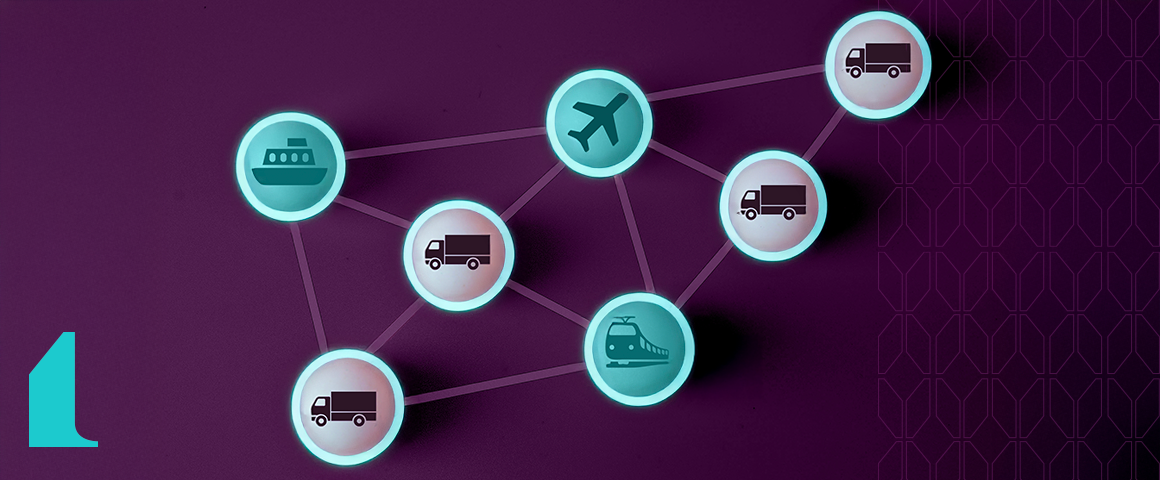Supply Chain Contract Management – A Guide for Supply Chain CLMs
Supply chain contracts form the backbone of complex networks that underpin operations across industries, defining the obligations and expectations between buyers and suppliers. A well-drafted contract not only outlines the scope of work and delivery schedules but also anticipates potential disruptions, safeguarding continuity and mitigating risks.
Managing these contracts can be challenging, especially in the face of ever-evolving regulations and market dynamics. This is where Contract Lifecycle Management (CLM) solutions come into play. CLM software empowers supply chain professionals to efficiently manage contracts, ensuring compliance, minimizing risks, and optimizing performance. By leveraging CLM tools, organizations can gain real-time visibility into their contract portfolio, automate manual tasks, and make data-driven decisions to strengthen their supply chain resilience.
The Role of Contracts in Supply Chain Management
Contracts play a pivotal role in supply chain management, serving as the foundation for defining performance parameters, ensuring quality, and mitigating risks. These legally binding agreements specify the obligations and expectations between buyers and suppliers, establishing a reliable framework for managing the flow of goods and services. The efficacy of supply chain contracts lies in their clarity and comprehensiveness. They must have well-defined terms and conditions to guide actions and decisions, especially during unforeseen circumstances.
One of the primary functions of contracts in supply chain management is to define performance parameters. These include delivery schedules, quality standards, and pricing structures. By clearly outlining these expectations, contracts help ensure that suppliers meet their commitments and buyers receive the goods or services they require in a timely and satisfactory manner. Additionally, contracts serve as a mechanism for ensuring quality control. They can specify quality assurance processes, inspection criteria, and compliance measures to maintain the integrity of the supply chain.
Supply chain contracts also allocate risks and responsibilities between parties, specifying which entity is liable for issues such as delays, quality concerns, or non-compliance.
Key clauses like force majeure protect against penalties during uncontrollable events, while termination rights provide structured exit strategies. Continuous improvement clauses ensure resilience by mandating regular assessments and updates. This clarity reduces the potential for disputes and provides a roadmap for resolving any issues that may arise. Contracts can include provisions for risk management, such as insurance requirements, indemnification clauses, and contingency plans for unforeseen events.
Types of Supply Chain Contracts
Let’s take a look at the types of contracts that supply chain management involves:
- Purchase agreements: These contracts outline the terms and conditions of the buyer-seller relationship, specifying details such as pricing, quantities, and payment terms.
- Service Level Agreements (SLAs): SLAs define the expected level of service performance, including metrics such as response times, uptime guarantees, and penalties for non-compliance.
- Non-Disclosure Agreements (NDAs): NDAs protect sensitive information exchanged during supply chain operations, preventing unauthorized disclosure or use of confidential data.
- Quality agreements: These contracts establish quality control standards, testing procedures, and compliance requirements to ensure that products or services meet the desired specifications.
- Transportation contracts: Transportation contracts define the terms and conditions for the movement of goods, including shipping methods, routes, insurance coverage, and liability allocation.
Challenges in Supply Chain Contract Management
From ensuring compliance with evolving regulations to managing risks and optimizing contract lifecycles, contract managers must navigate complex issues to maintain a robust and resilient supply chain. Procurement challenges, like handling external party paper and non-preferred terms, require solutions that centralize documentation, streamline vendor management, and ensure compliance with regulatory standards. Let’s explore some of these key challenges in detail.
Ensuring Compliance
One of the primary challenges in supply chain contract management is keeping up with regulations and standards on a global level. As governments often introduce new laws and industry bodies update their guidelines, contract managers must ensure that their contracts remain compliant. This requires continuous monitoring of regulatory changes and proactive updating of contract terms and conditions.
Failure to maintain compliance can result in legal penalties, reputational damage, and supply chain disruptions. To overcome this challenge, contract managers should stay informed about relevant regulatory developments, collaborate with legal experts, and leverage technology to automate compliance checks and alerts.
Managing Risk
Effective contract and risk management is crucial for supply chain management professionals. Identifying and mitigating potential risks through well-crafted contracts can help prevent disruptions and protect the organization from financial losses. Some strategies for managing risk include:
- Conducting thorough due diligence on suppliers to assess their financial stability, operational capabilities, and reputation.
- Incorporating risk allocation clauses in contracts, clearly defining each party’s responsibilities and liabilities.
- Including force majeure provisions to address unforeseen events that may impact contract performance.
- Establishing performance metrics and monitoring systems to identify and address potential issues proactively.
- Developing contingency plans and alternative supplier arrangements to ensure business continuity in case of disruptions.
- Regularly reviewing and updating contracts to reflect changing market conditions and risk profiles.
Optimizing Contract Lifecycles
Streamlining the creation, execution, and renewal of supply chain contracts plays a significant role in managing SP contracts. Some tips for optimizing contract lifecycles include:
- Standardizing contract templates and clauses to ensure consistency and reduce negotiation time.
- Implementing a centralized contract repository to enable easy access, search, and collaboration among stakeholders.
- Automating workflows for contract approvals, signatures, and renewals to minimize manual effort and errors.
- Establishing clear roles and responsibilities for contract management tasks, such as drafting, reviewing, and monitoring.
- Conducting regular contract audits to identify opportunities for improvement and ensure compliance with terms and conditions.
- Leveraging data analytics to gain insights into contract performance, supplier relationships, and potential risk areas.
- Developing a contract renewal strategy that takes into account past performance, changing business needs, and market conditions.
Supply Chain CLM – Empowering Contract Management
Centralized Contract Repository
One of the key benefits of CLM software is the centralized contract repository. This secure, searchable database stores all supply chain contracts in one place, making it easy for stakeholders to access the information they need. A centralized repository eliminates the need for manual searches through scattered files and ensures that everyone is working with the most up-to-date versions of contracts.
This feature is particularly valuable for organizations with complex global supply chains, as it helps maintain consistency and reduces the risk of errors or discrepancies. A centralized repository also enables better contract tracking, allowing managers to monitor expiration dates, renewal deadlines, and other critical milestones.
Automated Workflows
CLM software automates many of the manual tasks associated with supply chain contract management, such as drafting, reviewing, and approving contracts. It also helps procurement teams manage third-party paper seamlessly, maintain compliance, and track amendments with ease—making Malbek CLM a key enabler for strategic contract management.
For example, automation enhances supplier collaboration by sharing performance data, reduces errors through template-driven processes, and proactively mitigates risks by identifying unfavorable clauses early. Automated workflows ensure that contracts move smoothly through the various stages of the lifecycle, with timely notifications and reminders sent to the appropriate parties.
This automation reduces the risk of delays, errors, and bottlenecks, while also freeing up time for contract managers to focus on more strategic tasks. Automated workflows help ensure compliance with internal policies and external regulations, as the software can be configured to enforce specific rules and approval processes.
Malbek CLM empowers procurement teams to reduce cycle times by up to 70%, optimize vendor relationships, and negotiate favorable terms with automated workflows and centralized data access.
Real-Time Visibility and Reporting
Real-time visibility and reporting capabilities provide instant insights into the status and performance of contracts, enabling managers to make data-driven decisions and respond quickly to potential issues. For example, Malbek CLM provides procurement teams with complete visibility of agreements, enabling proactive risk management, vendor performance monitoring, and milestone tracking—all critical for reducing contract leakage and maximizing value.
With dashboards and customizable reports, stakeholders can track key performance indicators (KPIs), monitor supplier compliance, and identify opportunities for improvement. This level of visibility allows organizations to spot potential problems early and take proactive measures to mitigate them.
Collaboration Tools
CLM platforms facilitate seamless collaboration between procurement, legal, finance, and other teams involved in supply chain contract management. These tools enable stakeholders to communicate, share documents, and work together in real-time, regardless of their location. Collaboration features such as commenting, version control and secure file sharing help ensure that everyone is aligned and working towards the same goals.
This is particularly important in global environments, where multiple parties (often separated by large distances and borders) may be involved in contract negotiation and execution.
AI-Powered Contract Analytics
Artificial Intelligence is transforming supply chain contract management by enabling organizations to extract valuable insights from their contract data. AI-powered contract analytics tools can automatically review contracts, identifying potential risks, opportunities, and areas for improvement.
For example, AI can help organizations identify contracts with missing clauses, non-standard terms, or high-risk suppliers. This level of insight is invaluable for effective risk management and contract optimization. AI can help organizations benchmark their contract performance against industry standards, identifying best practices and areas for improvement.
Best Practices for Successful Supply Chain Contract Management
To excel in supply chain contract management, you need to adopt proven strategies and best practices. Implementing these techniques will help you optimize your contract processes, reduce risks, and improve overall supply chain performance. Here are some actionable tips to elevate your supply chain contract management game.
Standardizing Contract Templates
Create a library of pre-approved templates for various contract types, such as purchase agreements, service level agreements, and NDAs. This will ensure consistency and reduce the time you spend drafting and reviewing contracts. Work closely with your legal team to develop and maintain these templates, incorporating lessons learned from past contracts and industry best practices. Don’t forget to regularly update your templates to reflect changes in regulations, market conditions, and business requirements.
Conducting Regular Contract Audits
Establish a schedule for reviewing your contracts, assessing their performance, and identifying areas for improvement. Use key performance indicators (KPIs) to measure contract effectiveness, such as on-time delivery, quality metrics, and cost savings. During your audits, look for potential opportunities, such as volume discounts or performance incentives. Don’t just focus on the negatives – celebrate the successes and identify best practices that can be replicated across your supply chain.
Collaborating Cross-Functionally
Break down silos and work closely with stakeholders from procurement, legal, finance, and operations. Collaboration should start early in the contract lifecycle, with stakeholders providing input on requirements, risks, and performance metrics. Encourage open communication and joint problem-solving with your internal teams and external suppliers. This will help you identify potential issues and opportunities, ensuring that your contracts are meeting the needs of all parties involved.
FAQ – Supply Chain Contract Management
What is contract management in the supply chain, and why is it important?
Supply chain contract management involves the creation, execution, and oversight of contracts that govern the relationships between organizations and their suppliers. Effective contract management in the supply chain is crucial for mitigating risks, ensuring compliance, and optimizing performance.
How does contract logistics differ from contract management in supply chain management?
Contract logistics focuses on the operational aspects of fulfilling a contract, such as transportation, warehousing, and distribution. In contrast, contract management in supply chain management encompasses the entire lifecycle of a contract, from negotiation and creation to execution and renewal.
What role does contract negotiation play in supply chain management?
Contract negotiation in supply chain management is the process of discussing and agreeing upon the terms and conditions of a contract between a buyer and a supplier. Effective negotiation helps organizations secure favorable terms, mitigate risks, and build strong supplier relationships.
How can organizations improve their supply contract management processes?
Companies should adopt best practices such as standardized contract templates, regular audits, and the use of CLM software. These strategies can help streamline processes, reduce risk, and improve performance across the supply chain.
Conclusion
To excel in supply chain contract management, focus on key strategies that drive efficiency and mitigate risks. Standardize your contract templates, automate manual processes, and prioritize real-time visibility to stay ahead of disruptions. Leverage tools that centralize data, streamline collaboration and enhance compliance to ensure your supply chain operates seamlessly, even in complex global environments. By adopting these practices, you can unlock higher performance, minimize errors, and build stronger supplier relationships.
With Malbek’s Contract Lifecycle Management (CLM) solution, you can achieve all of this. With AI-powered insights, automated workflows, and an intuitive interface, Malbek simplifies contract management at every stage. Its centralized repository, real-time analytics, and seamless integration with your existing systems ensure that managing contracts becomes smarter, faster, and more reliable. Take control of your supply chain contracts with Malbek—because a resilient supply chain starts with better contract management.






